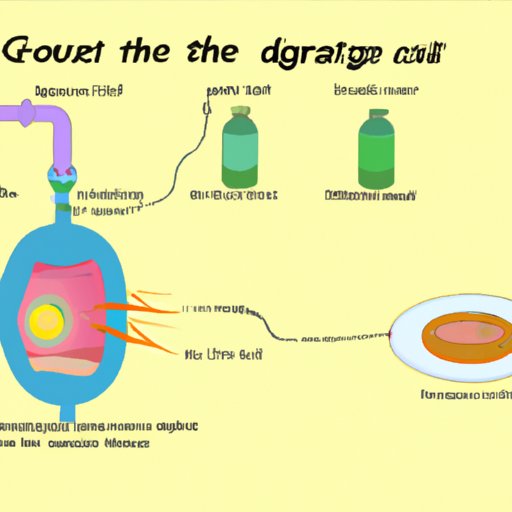Introduction
The word “fart” is often used as a joke or an insult, but the reality is that it’s actually a very normal bodily function. In scientific terms, a fart is simply a mixture of gases released from the digestive system. Knowing more about exactly how they work can help us to better understand our bodies and how we interact with the world around us.
In this article, we’ll take a closer look at the science behind farts: what causes them, why we have them, and what potential benefits they may offer. We’ll explore the anatomy and physiology of farts, the physics and chemistry of flatulence, the digestive process that turns food into gas, and some common questions about farts. By the end, you should have a greater understanding of your body and how it works.
Exploring the Science Behind Farts: How Do They Work?
When it comes to understanding how farts work, there are three main areas of scientific study: anatomy and physiology, physics, and chemistry. Let’s take a look at each of these in more detail.
Anatomy and Physiology of Farts
The anatomy and physiology of farts starts with the digestive system. As food passes through the small intestine, it is broken down into various nutrients, which are absorbed by the body. The remaining material then passes through the large intestine, where bacteria break it down further and produce gas.
The gas then moves into the rectum, where it is stored until it is ready to be expelled. Muscles in the rectum contract and relax to push the gas out of the body, creating the sound we know as a fart.
Physics of Flatulence
The physics of flatulence deals with the pressure and temperature of the gases inside the body. As the gas builds up in the rectum, the pressure increases, and the temperature rises. This causes the gas to expand, and the walls of the rectum to bulge outward. When the gas is finally expelled, it makes a loud noise.
Chemistry of Farting
The chemistry of farting involves the composition of the gases produced by the body. Typically, farts contain nitrogen, carbon dioxide, oxygen, methane, and hydrogen sulfide. Some people produce more of one type of gas than another, which can affect the smell of the fart.

The Digestive Process: How Food Becomes Gas
To understand how food turns into gas, it’s important to first understand the digestive process. The digestive system is made up of several organs, including the mouth, stomach, small intestine, and large intestine. Each of these organs plays an important role in breaking down food and turning it into energy for the body.
Overview of Digestive System
The digestive system begins in the mouth, where the food is chewed and mixed with saliva. The saliva helps to break down the food and make it easier to swallow. From there, the food travels down the esophagus and into the stomach, where it is further broken down by acids.
Breaking Down Food Into Nutrients
The next step in the digestive process is the small intestine, where the food is broken down into its individual components, such as proteins, carbohydrates, fats, vitamins, and minerals. These components are then absorbed into the bloodstream and used to fuel the body.
Role of Bacteria in Gas Production
The final step in the digestive process is the large intestine, where bacteria break down any remaining food particles. As they do so, they produce gases, such as hydrogen, carbon dioxide, and methane. These gases are then stored in the rectum until they are ready to be expelled.
Common Questions About Farts Answered
Now that we’ve explored the science behind farts, let’s answer some common questions about them.
What Is the Smell of a Fart?
The smell of a fart is determined by the types of gases present. Hydrogen sulfide is the most common gas found in farts, and it gives off a strong, unpleasant odor. Other odorous gases include methane, carbon dioxide, and skatole.
Are Farts Flammable?
Yes, farts can be flammable. This is due to the presence of methane and other flammable gases in the mix. While it is possible to light a fart on fire, it is not recommended due to the risk of injury.
Why Do We Fart?
We fart because our bodies need to get rid of the extra gas produced by the digestive system. This gas is a byproduct of the breakdown of food, and it needs to be expelled in order to maintain a healthy balance in the body.
Conclusion
Farts are a normal part of life and a natural way for the body to expel excess gas. Understanding the science behind farts can help us to better appreciate our own bodies and how they work. By exploring the anatomy and physiology, physics, and chemistry of farts, we can gain insight into the digestive process, learn more about the gases involved, and answer common questions about farts.
The knowledge gained from this exploration can also help us to make better lifestyle choices that will benefit our health.
(Note: Is this article not meeting your expectations? Do you have knowledge or insights to share? Unlock new opportunities and expand your reach by joining our authors team. Click Registration to join us and share your expertise with our readers.)
